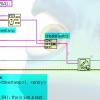Generating event off windows message queue
-
Similar Content
-
- 3 replies
- 1,755 views
-
- 8 replies
- 3,653 views
-
- 4 replies
- 3,584 views
-
- 6 replies
- 5,574 views
-
Send cluster / struct from dll with a couple of int's AND a string of text to Labview
By Neon_Light,
- postlvuserevent
- dll
- (and 2 more)
- 6 replies
- 4,582 views
-




Recommended Posts
Join the conversation
You can post now and register later. If you have an account, sign in now to post with your account.